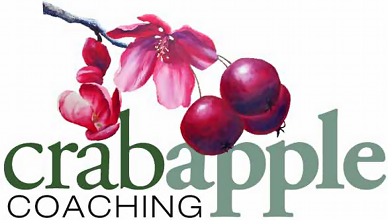 Retirement Stats, Studies, and Stuff
Retirement Stats, Studies, and Stuff
By Mariella Vigneux, MBA, ACC
Certified Professional Coach
If you recall from Part 1, flow is the deeply satisfying experience we have when we’re in the zone. It happens when we’re involved in an activity in which our skills and the challenges of the activity are both very high – to the point where we lose ourselves entirely in the activity and everything seems to flow. These peak experiences give us a sense of personal fulfillment.
It may surprise you to hear that many people experience flow at work. How can that be, when so many people say they hate their jobs? Many jobs, though, have all of the components required for flow: clearly defined goals, strong feedback, and incremental challenges.
Loss of flow upon retirement?
What happens if work is our main source of peak experiences? Upon retiring, will we have activities to replace those experiences? What does it take to completely lose ourselves in an activity? How can we generate flow experiences in retirement, without the defined goals, feedback mechanisms and structured challenges of work?
The trick is to create the conditions necessary to nurture flow. According to Mihaly Csikszentmihalyi, three conditions are key:
1. Goals are Clear
For a person to be deeply involved in any activity it is essential that he know precisely what tasks he must accomplish, moment by moment.
2. Feedback is Immediate
It is difficult for people to stay absorbed in any activity unless they get timely information about how well they are doing. The sense of total involvement of the flow experience derives in large part from knowing that what one does matters, that it has consequences.
3. A Balance Exists Between Opportunity and Capacity
…. As skills improve, one is able to take on greater challenges. In fact, one must do so, to prevent tasks from becoming routine and boring.
Source: Adapted from Good Business: Leadership, Flow, and the Making of Meaning, Mihaly Csikszentmihalyi, 2003.
Examples of flow-inducing activities include playing sports; building structures; learning, studying and reading; travelling; gardening; good relationships; creating music and art; car restoration and maintenance; writing; developing code and building websites; golfing; meditation; playing chess and other games; climbing; skiing; tai chi…this list could keep going.
People rarely experience flow during passive recreation. Yet, isn’t it so much easier to settle into a television show, than to pick up a paintbrush or pedal the bicycle up the road. How do we get ourselves to create challenges when it takes such energy to do so? First, I think we need to take time to fully relax in retirement, to completely recharge ourselves. Then we can start looking for things that make us feel good, activities we enjoy.
But what if you can’t think of any activities you love? Many people tell me they don’t know what they enjoy. Well, it seems that not only do we pay attention to what we love, but we grow to love what we pay attention to. So, pick something, anything that intrigues you, to pay attention to. It could be icicles, or people’s smiles, or railway lines. Notice and savour them. That’s easy enough to do. Then you can begin to develop skills in that area. On a regular basis, study ice formations, or work to get people smiling, or map unused railway lines. Not only will you become better at something you are growing to love, you will be putting in place the things you need in retirement to make life sing: structures, routine, positive emotions, engagement, relationships, achievement, and last, but not least, a sense of meaning and purpose. You will have set in place the clearly defined goals, strong feedback, and incremental challenges you used to have at work.
The danger of flow
It’s worth mentioning that not all flow is good. You have only to watch a person use their skill in the art of persuasion to manipulate others – to their own benefit – to see that. The opera Don Giovanni shows us how a man’s skill in seducing women becomes a harmful, destructive obsession. And I often wonder how highly trained soldiers who excel in battle channel this talent once home from war. The negative side of flow is that, if not linked to positive values, it can lead to unhealthy outcomes.
Not everyone experiences flow
Some of you may be wondering why you’ve never experienced flow. It might help to know that not everyone does.In a survey of 6,469 Germans, the following question was asked: Do you ever get involved in something so deeply that nothing else seems to matter and you lose track of time?” Here is how the question was answered:
• Often – 23%
• Sometimes – 40%
• Rarely – 25%
• Never or Don’t Know – 12%
A similar rate was reported in the United States and Europe:
According to surveys conducted by the Gallup Organization in the United States and similar firms in Europe, between 15 percent and 20 percent of adults never seem to experience flow, while a comparable number claim to experience it every day. The other 60 percent to 70 percent report being intensely involved in what they do anywhere from once every few months to at least once a week.
Source: Good Business: Leadership, Flow, and the Making of Meaning, Mihaly Csikszentmihalyi, 2003.
Our brains like to be productive
If you don’t experience flow, it still makes sense to continually set new challenges for yourself doing something you enjoy. It takes an investment of energy and some training in focusing your attention, but not only will you increase your skills, you will also find more satisfaction than if you were to participate only in passive activities like watching television or surfing the Internet. Apparently, our brains find it harder to deal with free time than productive time.
Finding a passion may require trying new things, remembering what you used to enjoy, experimenting, taking note of small enjoyments, and shaking your life up a bit. The struggle is to have the self-discipline to create the habits necessary to do this – to build skills, to get off the couch, to put aside the multitasking, to give ourselves permission to play at something we love for longer periods of time, to be “selfish.”
The change fostered by flow brings positive growth. When we are meeting challenges and developing skills, we are growing, and what an ecstatic feeling it brings!
Recommended articles
Finding Flow
By Mihaly Csikszentmihalyi
Printed in Psychology Today, June 14, 2012.
An easy-to-read description of how to create flow at work, in play, and in social interactions
What Mel Brooks Can Teach Us about “Group Flow”
By R. Keith Sawyer
Printed in Greater Good: The Science of a Meaningful Life, January 24, 2012.
Discusses how flow can occur in groups and the 10 social triggers for group flow
Self-coaching questions
What do you want to be when you grow up? A mountain climber? Cellist? A much-loved grandparent? A poet? All of the above?
What would it take to give yourself permission to play at something you love for longer periods of time?
What kind of immediate feedback would you need in order to stay absorbed in an activity you’d like to develop?

Mariella, I love this edition of your newsletter. It seems to all fit together somehow as different people comment on various aspects of “flow” (or lack of), each in his or her own way. Your have recruited some great writers and I enjoy reading what they have to say. Thank you. amy
I love how everyone has a unique experience, a personal approach, a different hand of cards they’ve been dealt, and yet all are seeking some common experiences (like flow, peace, satisfaction). Thanks for you comment, Amy.